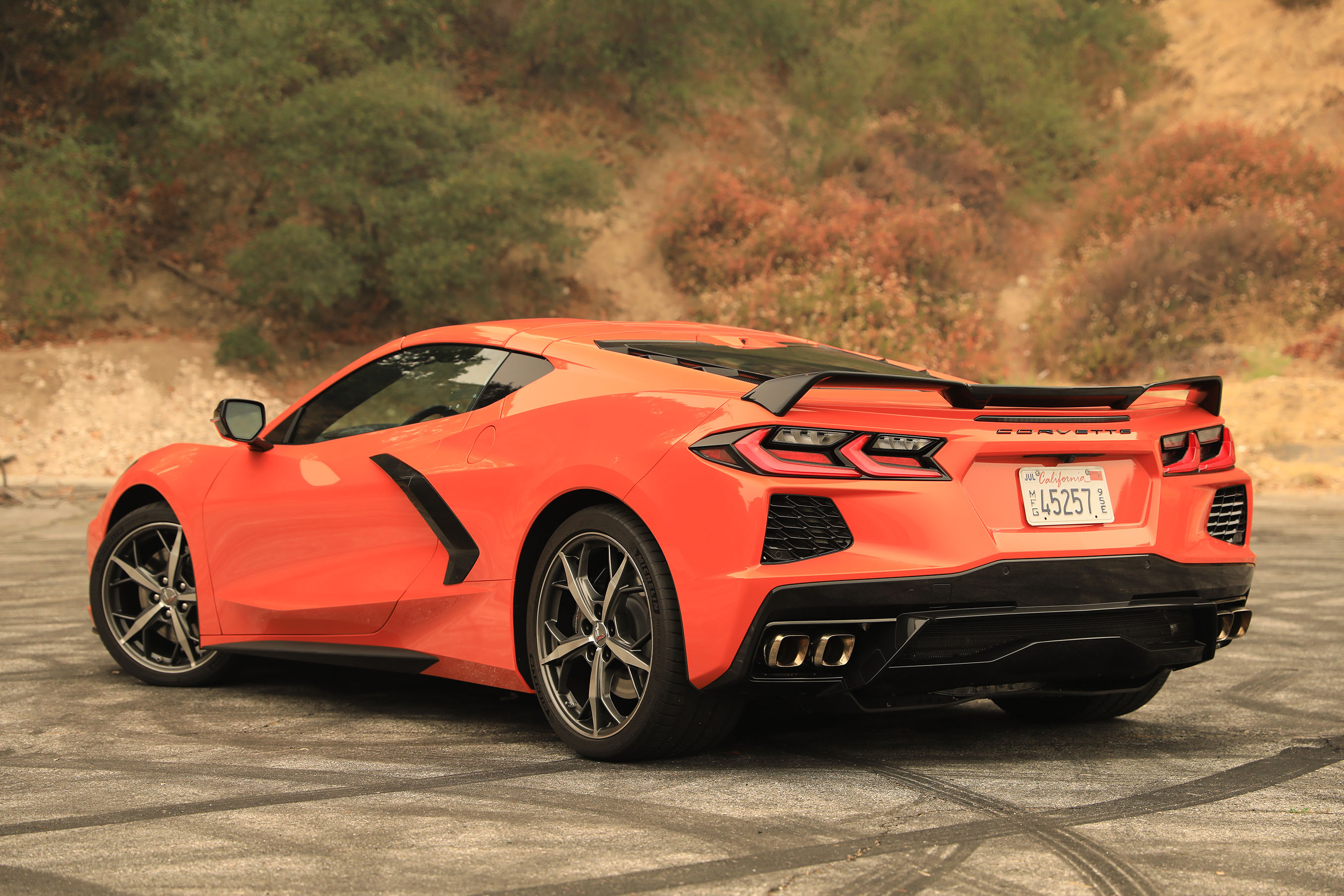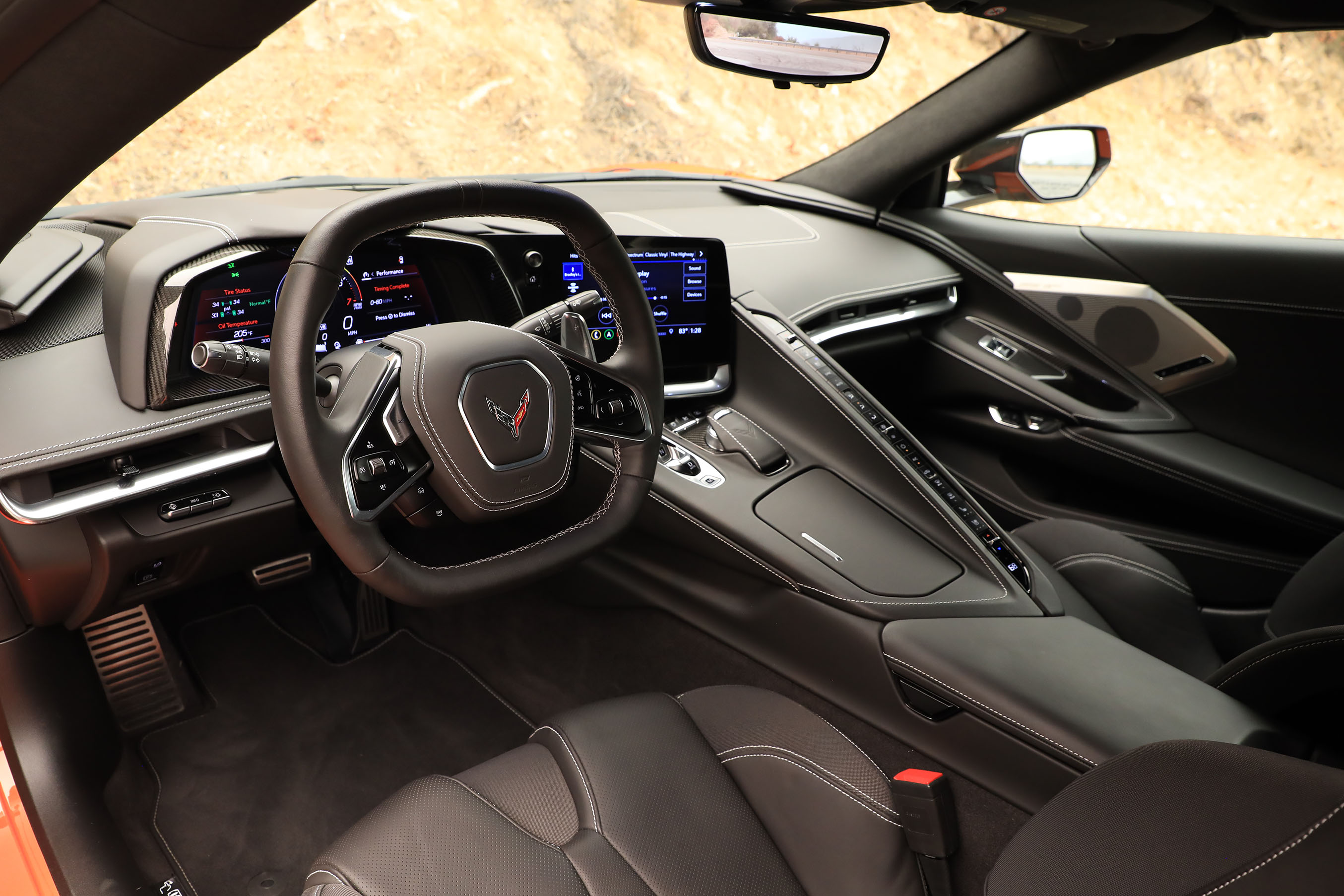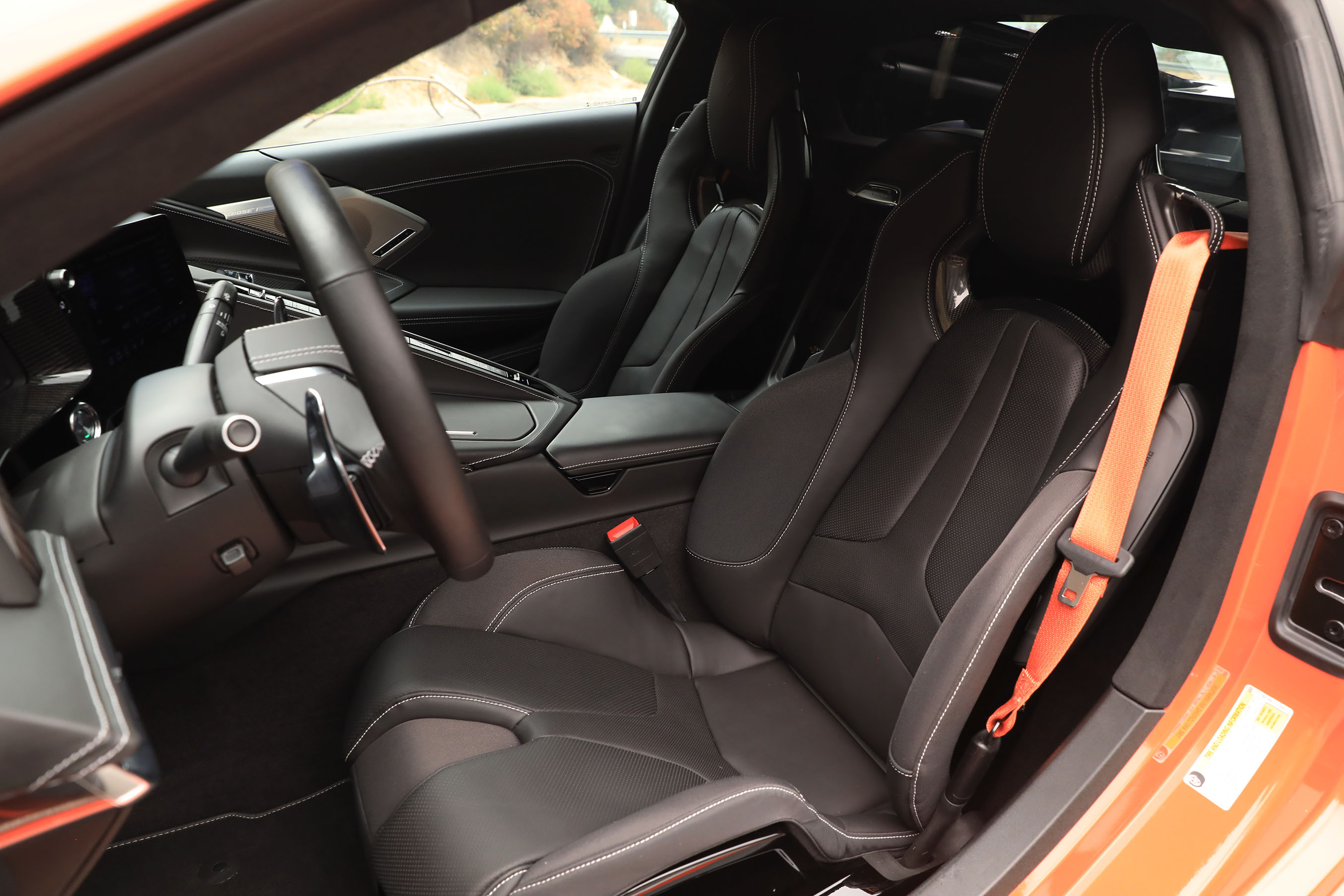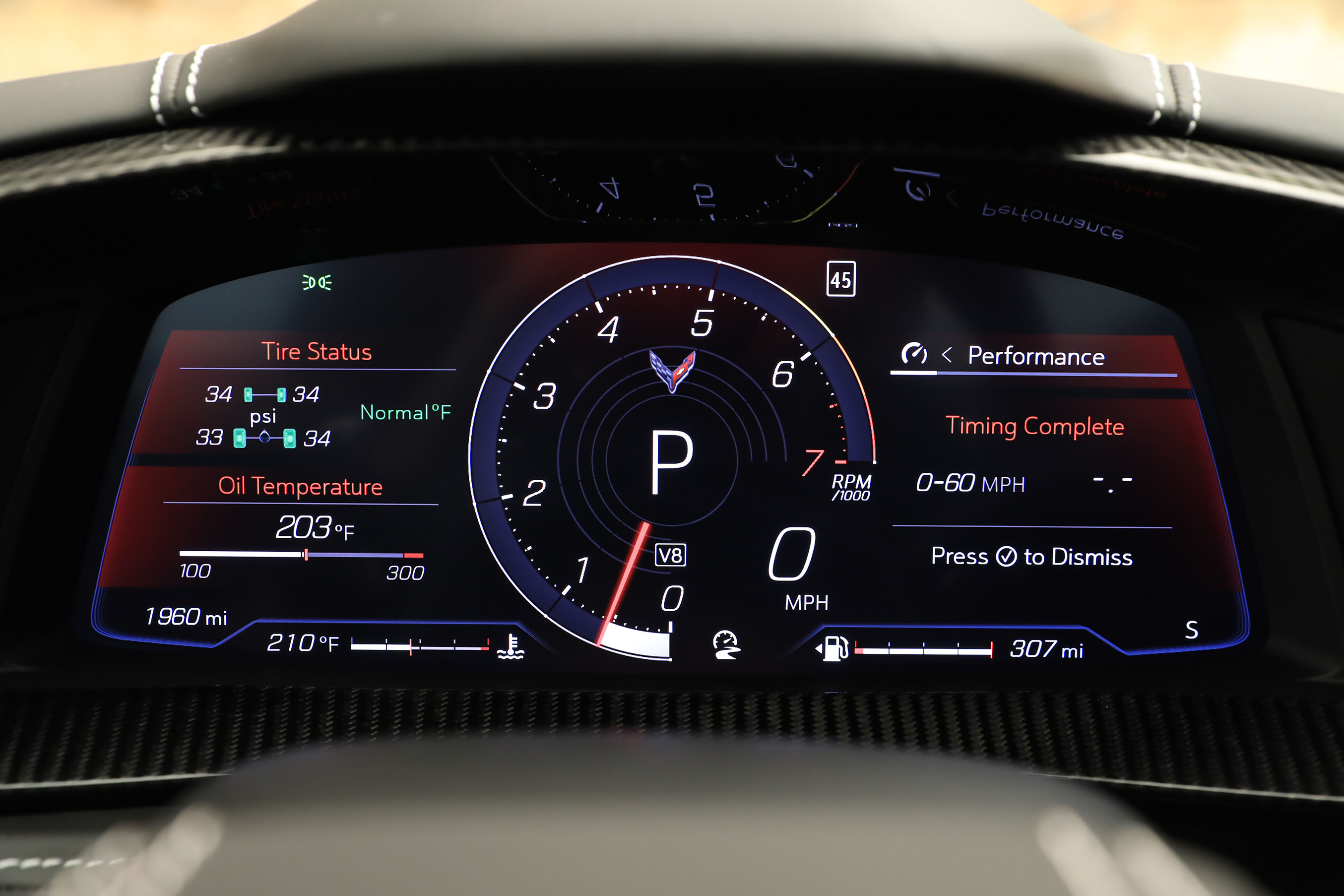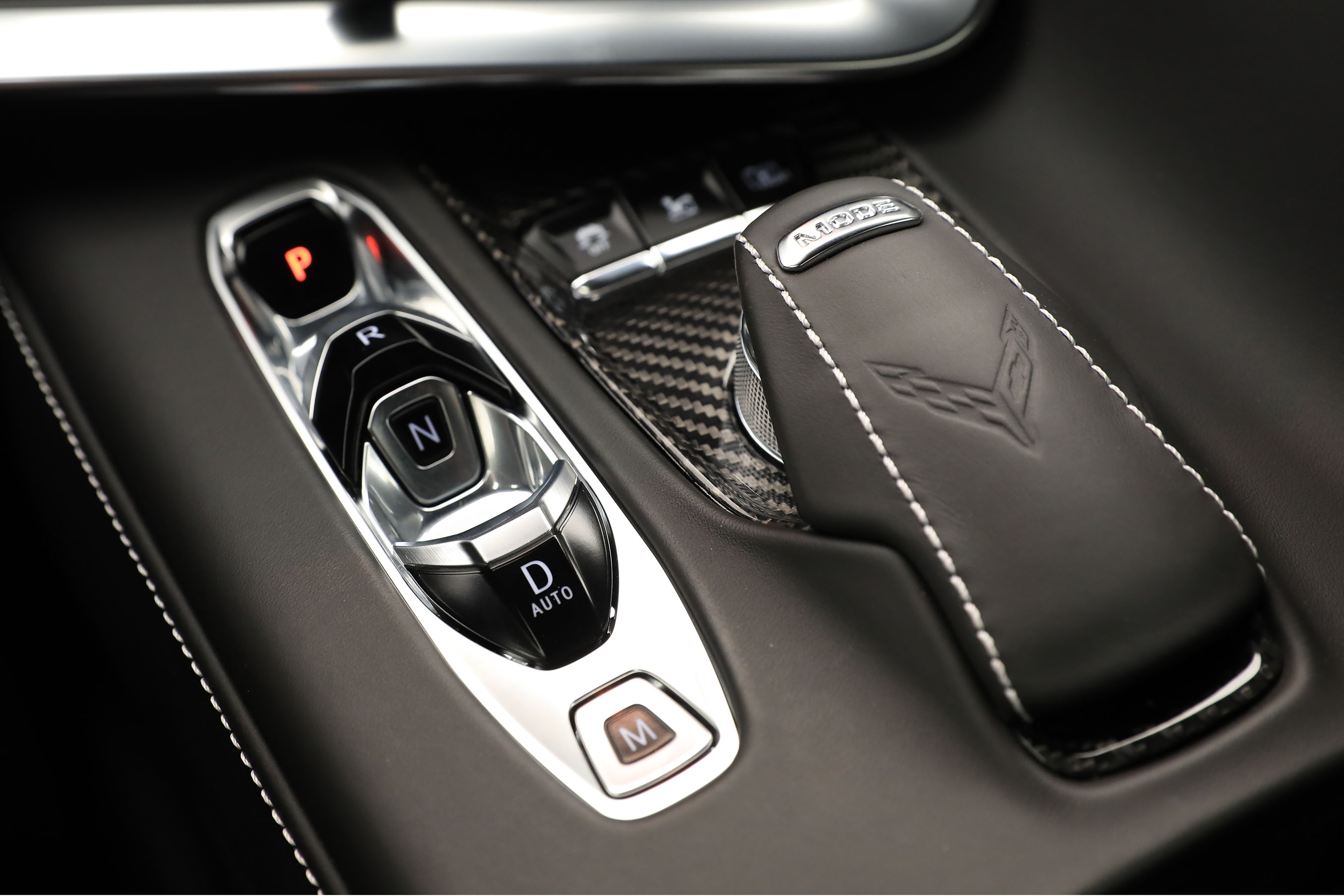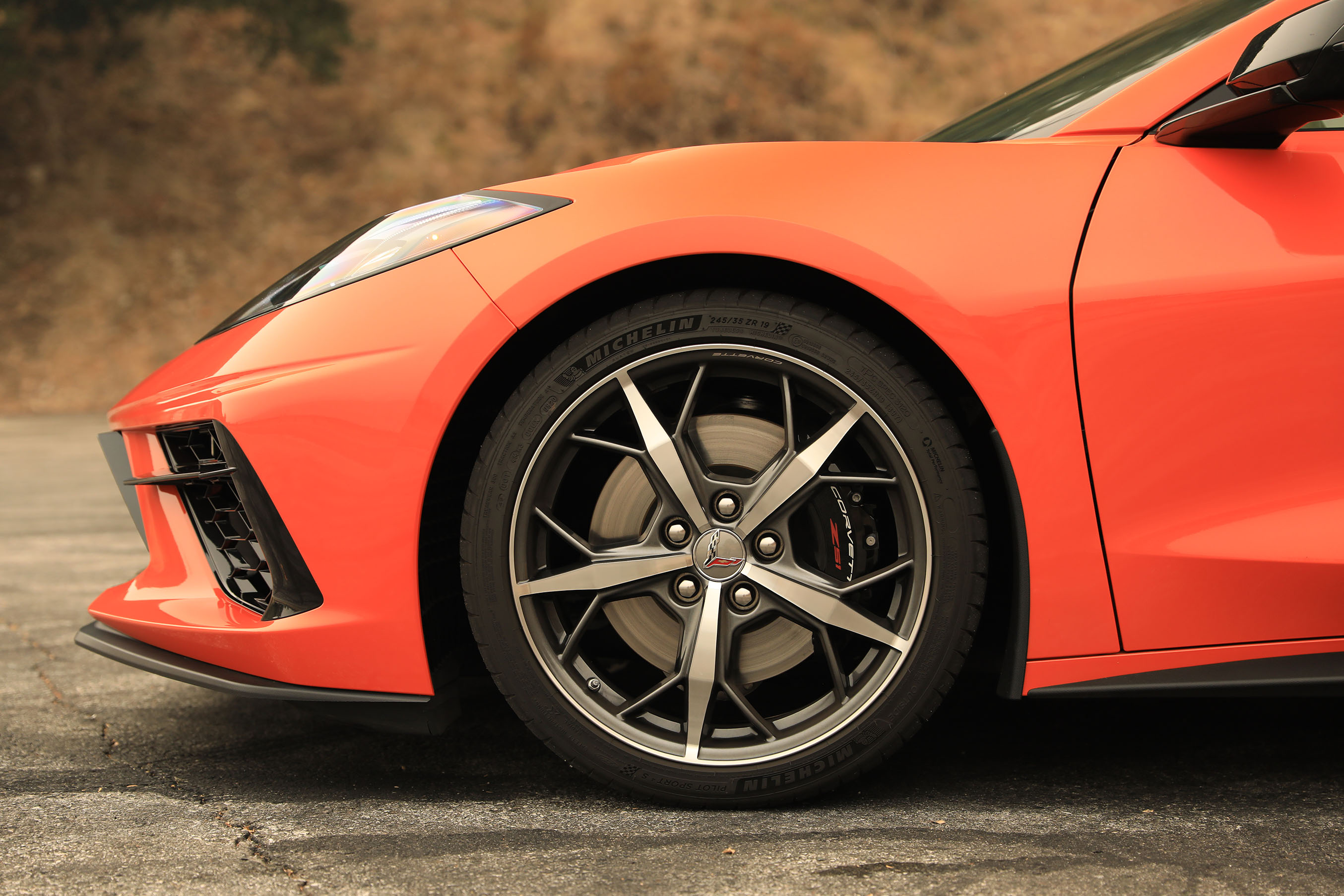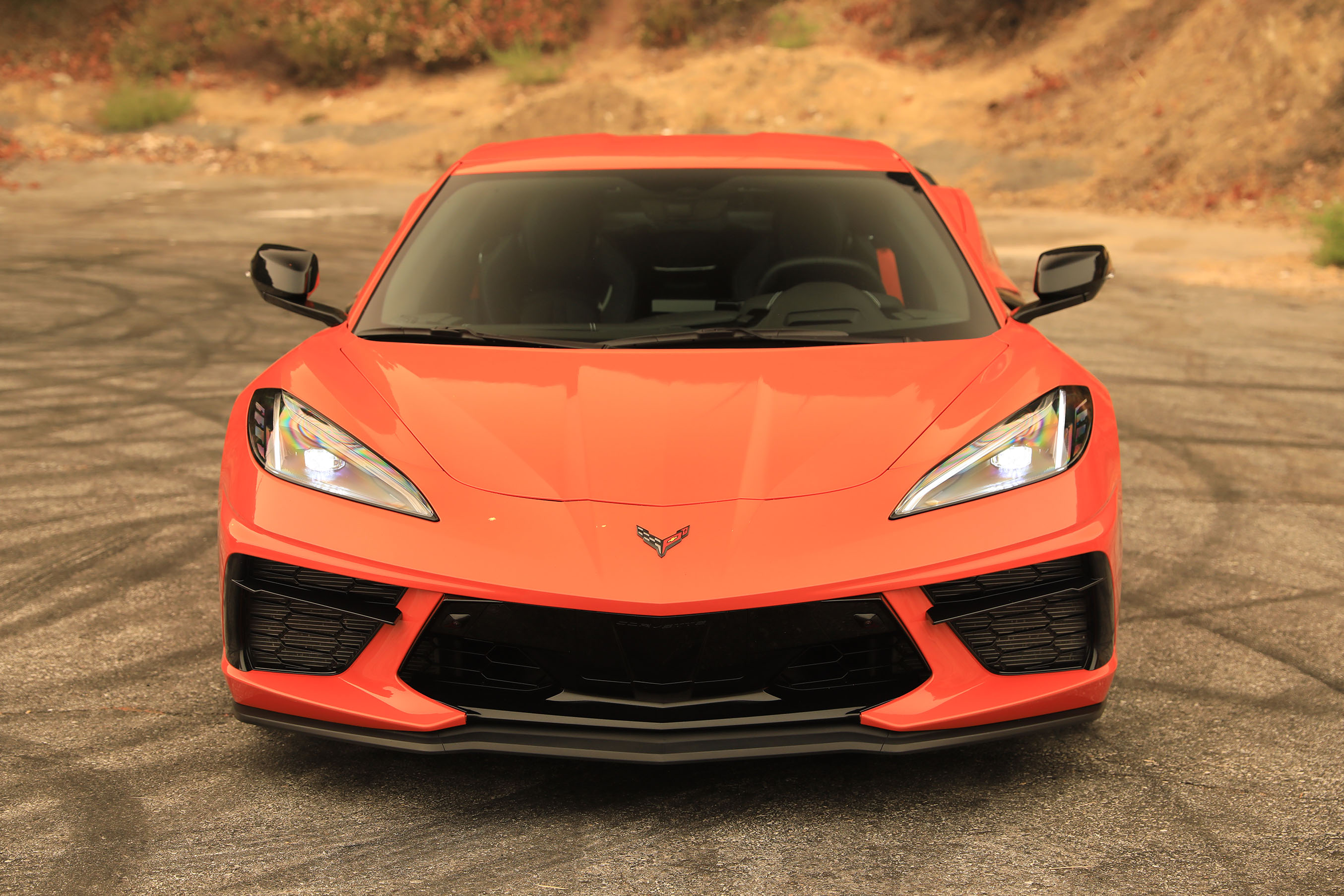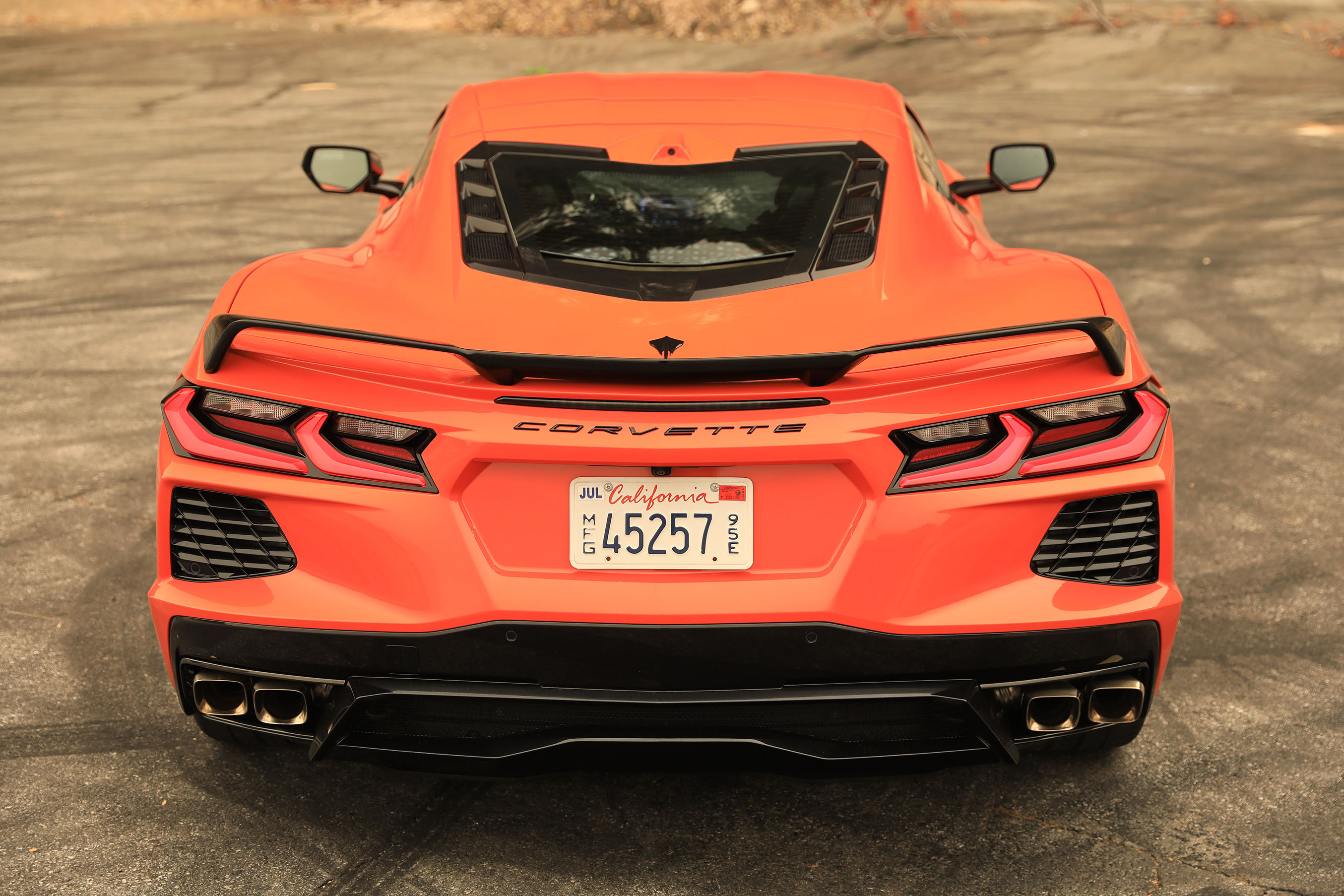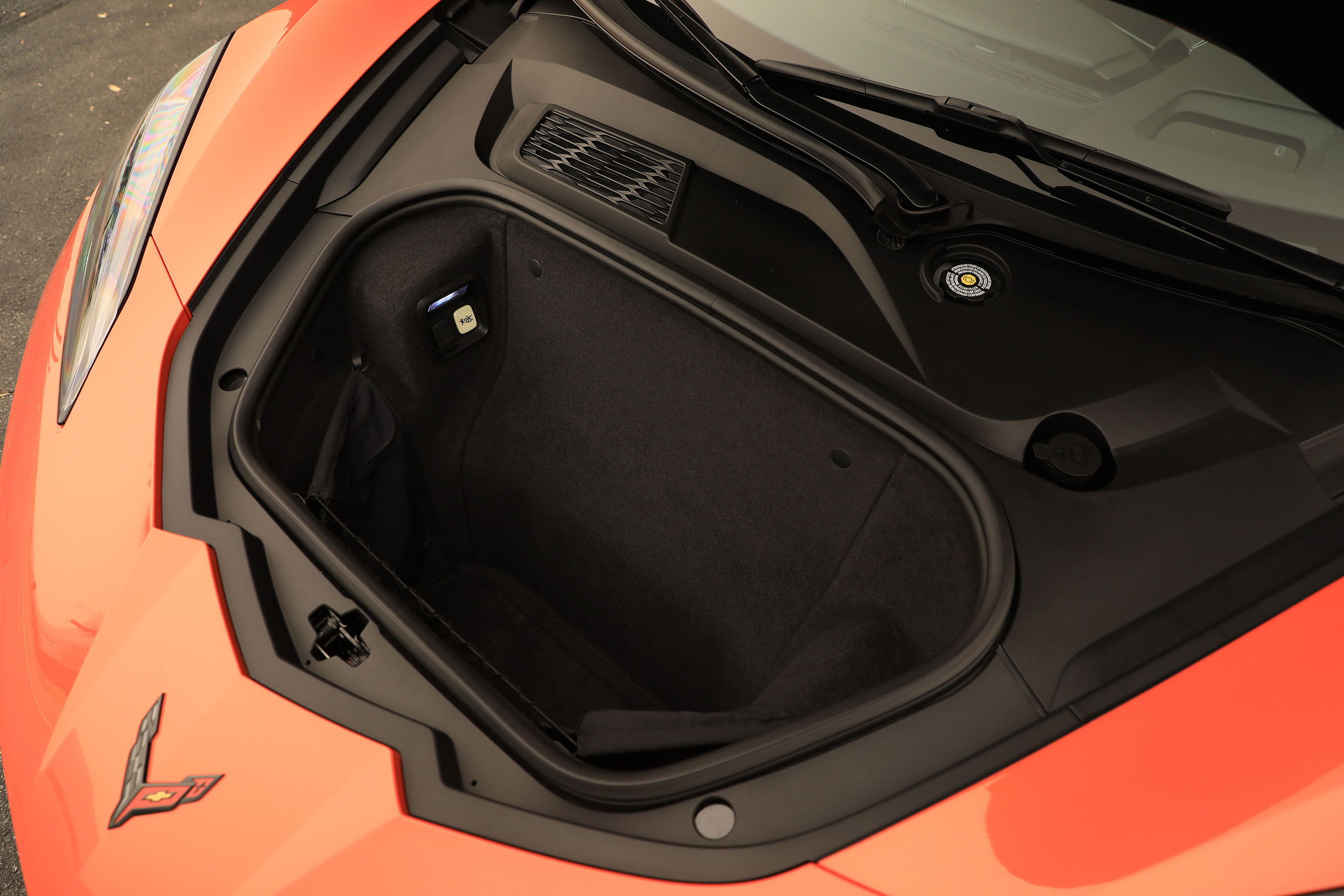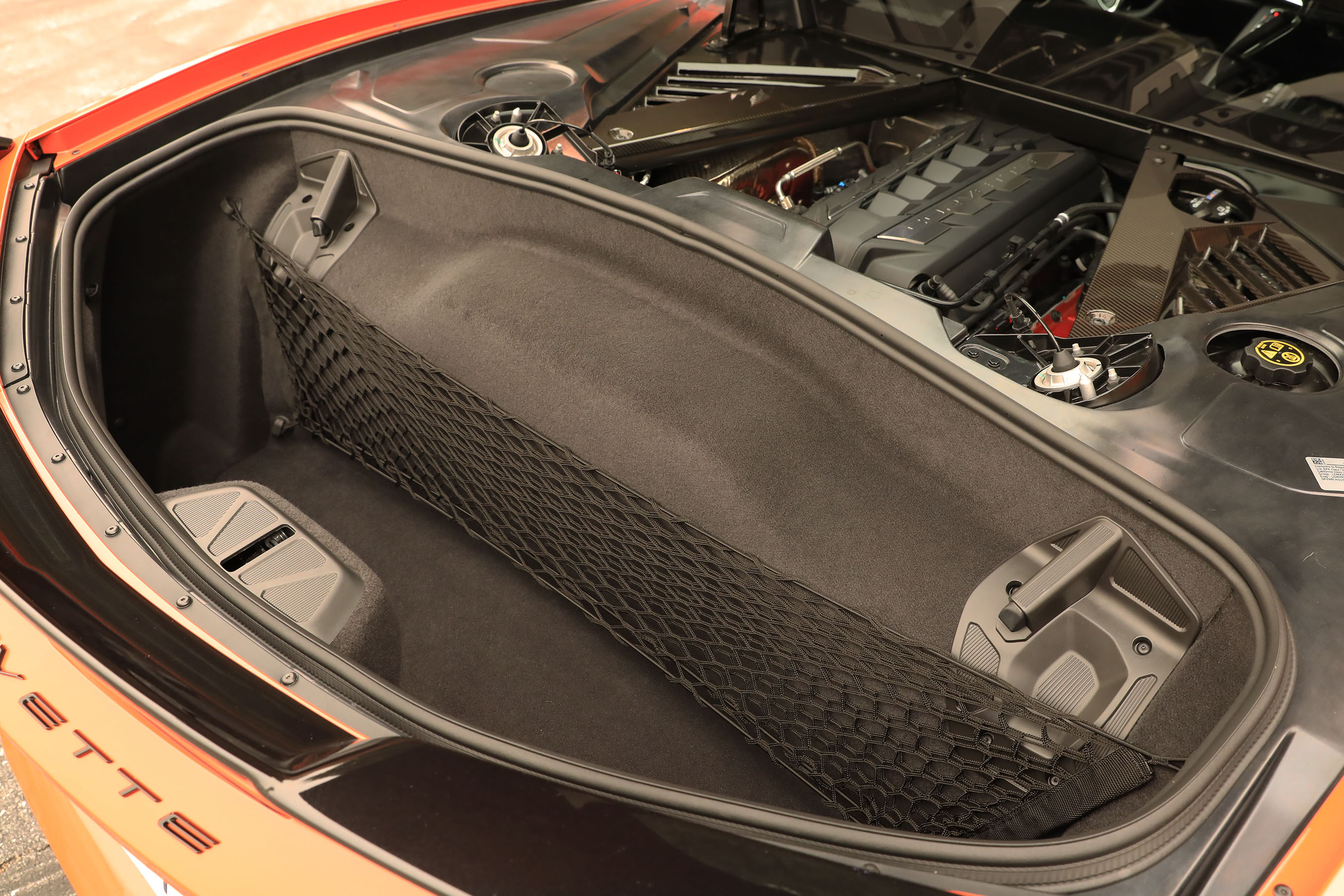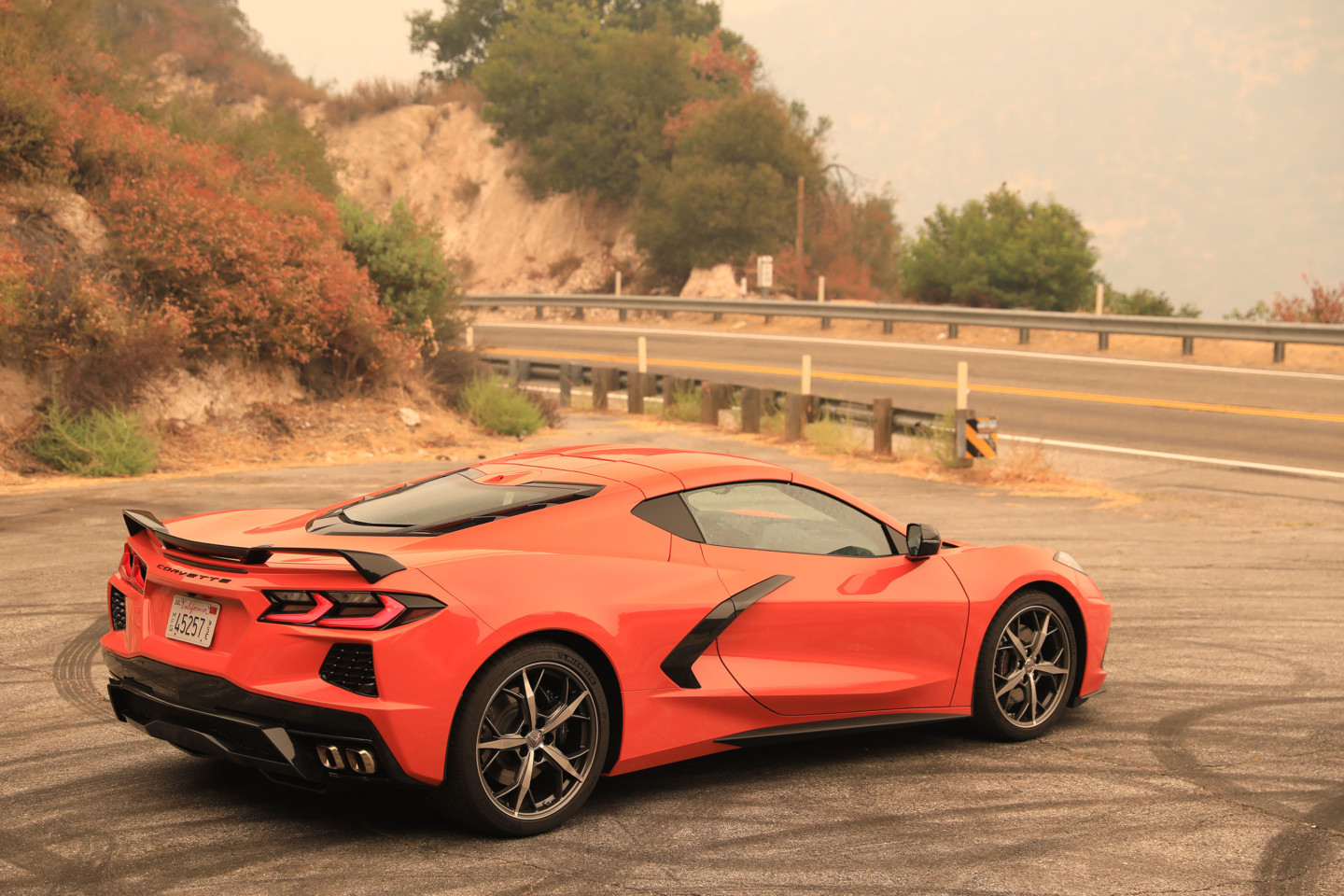As with many things this year, our seat time with the new mid-engined Corvette had to be put on hold as the world attended to more pressing issues. But considering the fact that the Corvette faithful has waited for more than a half-century for Chevrolet to put the engine in the middle, a few months is just a blip on the radar, right?
Fortunately, whether judged by the timeline of anticipation that started back when GM was developing the C2 or by the one set in motion by these recent delays, our patience has paid off.
In a recent editorial, former GM executive Bob Lutz explained that the mid-engine Corvette was originally planned for a 2015 debut, but the 2008 financial crisis pushed those plans back by five years. Considering this, one could hypothesize that the C7's angular aesthetic was actually derived from what we now know as the C8 - not the other way around.
By now, the headline-grabbing bullet points of the C8 are part of the performance world’s collective consciousness. But with all the bombast surrounding this radically redesigned Corvette, one important element seems to have gotten a bit buried by the noise: The engine.
That’s understandable, to some degree. But while the LT2 may not be as revolutionary as other elements of the C8, it represents not only a significant step forward for GM’s small-block V8 but also the most identifiable connection to Corvettes of the past.
It’s also a highly unusual pairing in the automotive world – you’d have to look back to the De Tomaso Pantera to find a mid-engined sports car with a pushrod V8 that’s been produced in any significant numbers. And as it turns out, that’s a big part of the C8’s charm.
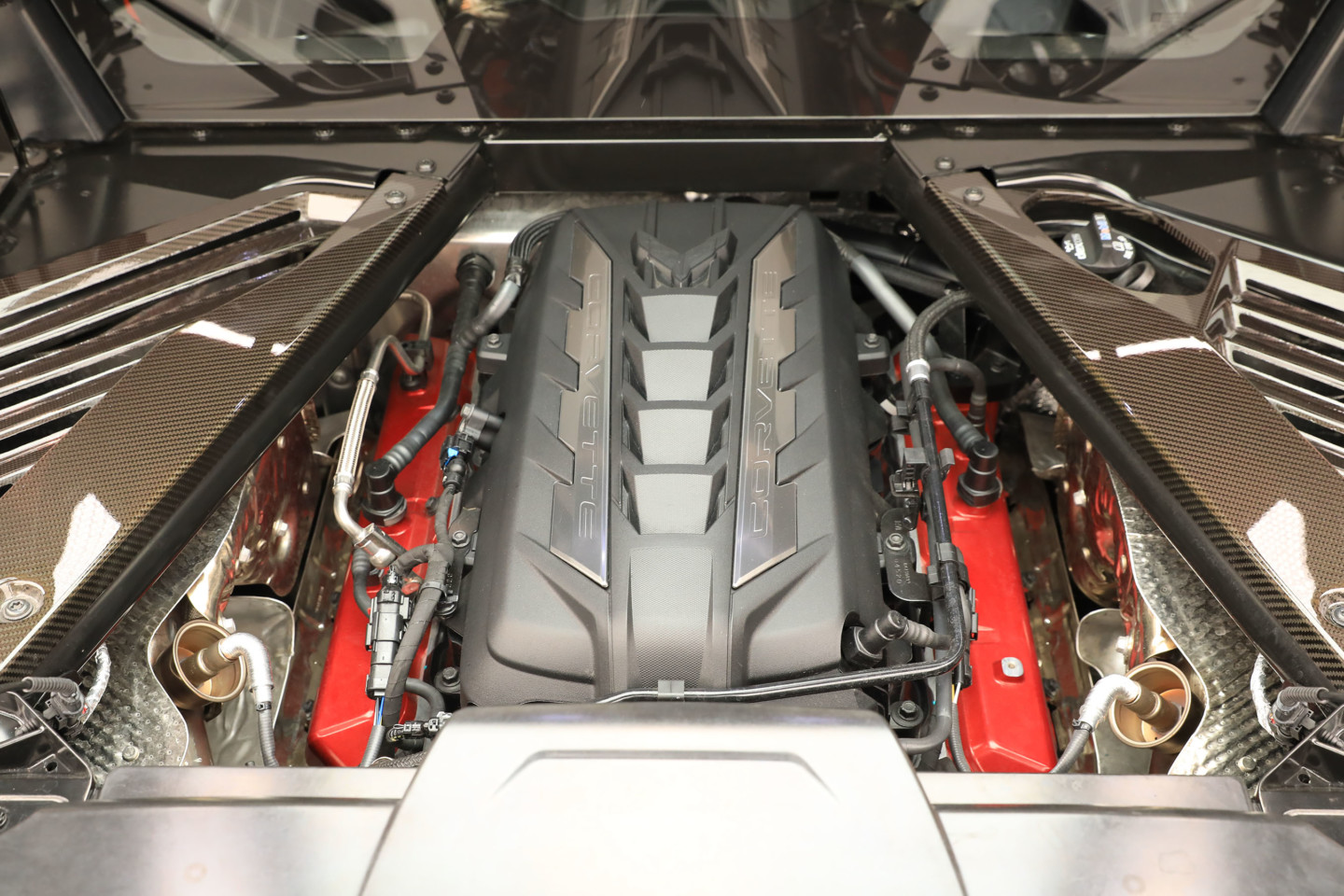
The 6.2-liter LT2 V8 produces 495 hp and 470 lb-ft when equipped with the performance exhaust system (or 5 hp less without it). GM says that, since they knew the engine would be visible through the rear glass, every nut, bolt, wire, tube and fastener was designed with appearance in mind. Or tester is also equipped with the optional engine appearance package, which includes the carbon fiber rail covers seen here.
Considering the fact that signs point toward a new 5.5-liter DOHC powerplant for the upcoming Z06, the LT2 may also be the most significant update we’ll see to the Gen V engine family for some time. Before heading to the hills in the new mid-ship wonder, we sat down with Mike Kociba, assistant chief engineer of small-block engines at General Motors, to get some insight into the LT2’s development and the unique opportunities that the C8 platform brought to the table.
Under The Hood
Our test vehicle is a Sebring Orange example that’s been outfitted with the 3LT equipment package as well as the Z51 Performance Package, Magnetic Ride Control, and a host of other odds and ends. Although a stripped-down example will put you at the helm of a C8 for just under $60,000, this particular Corvette rings up $86,865 when all is said and done. Yet even with a near 50-percent uptick in price, you’d still have a hard time finding a more potent sports car for the money today.
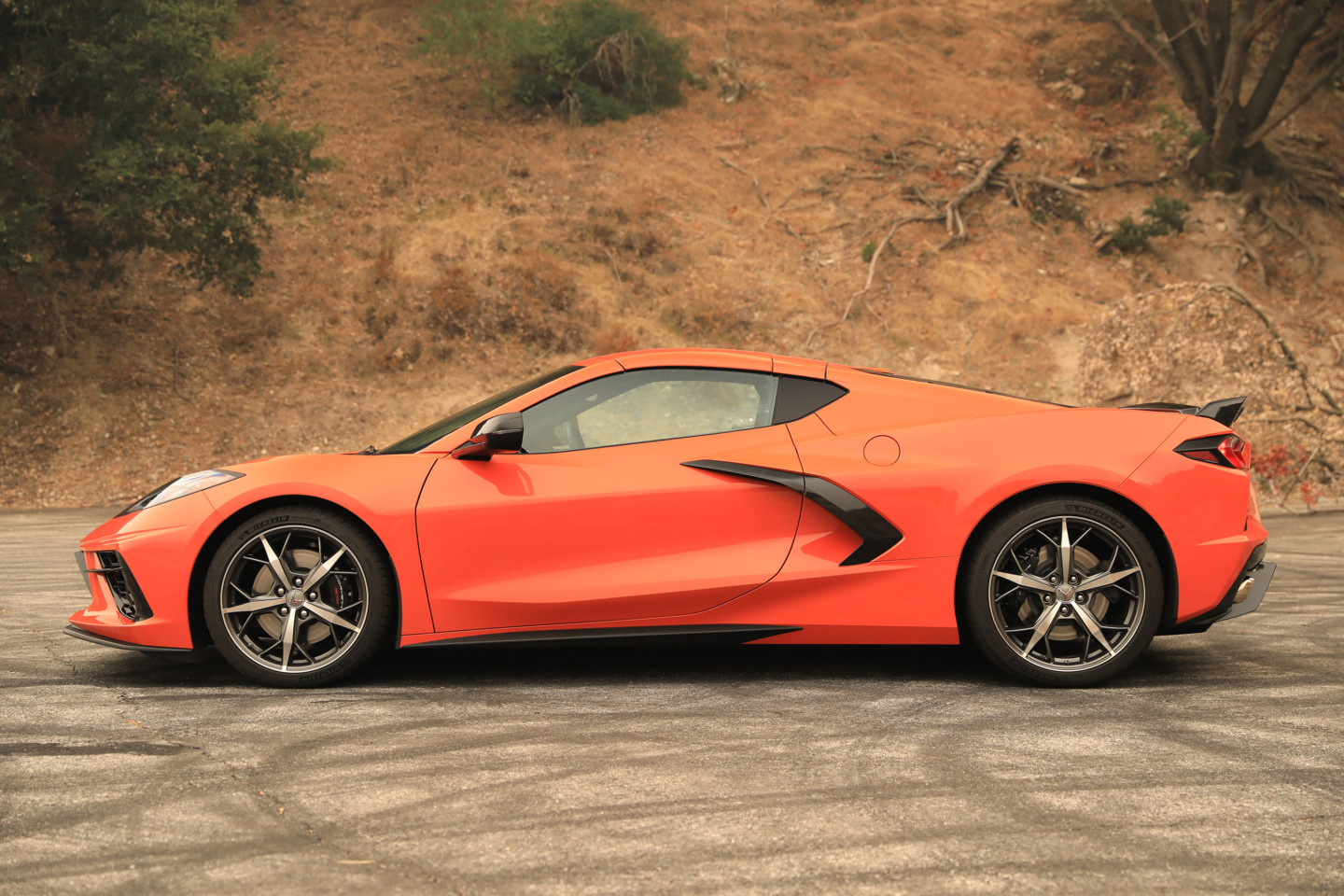
The optional Trident wheels outfitted here measure 19- x 8.5-inches up front and 20- x 11-inches in the rear. They come wrapped in sticky Michelin Pilot Sport 4S summer tires as part of the Z51 package.
Resting just in front of the rear axle, the LT2’s grunt is sent to the rear wheels through a newly-developed eight-speed dual-clutch transmission. With the majority of the Corvette’s weight over those wheels, it’s capable of rocketing to 60 mph in a McLaren-like 2.9 seconds (as configured here) while also reaping the handling benefits that a mid-engine layout affords.
But the C8 isn’t exactly a featherweight at well over 3,600 pounds, so achieving this supercar-like acceleration with this power-to-weight ratio can’t be done through a simple exhibition of brute force; it requires deliberate engineering.
“In comparison to the LT1, the changes to the engine are really sweeping – almost every component is new,” Kociba explains. “And the new engine position drove a series of new design considerations.”
Meanwhile, the inherent strengths of the Gen V architecture provided engineers with a great foundation to work.
“If you want torque, well, we’ve got it just about everywhere. And that’s one of the reasons the small-block and dual-clutch transmission make for such a great setup. Since we have so much low-end torque to work with, we don’t have to spool these engines up to get power, as our competition does.”
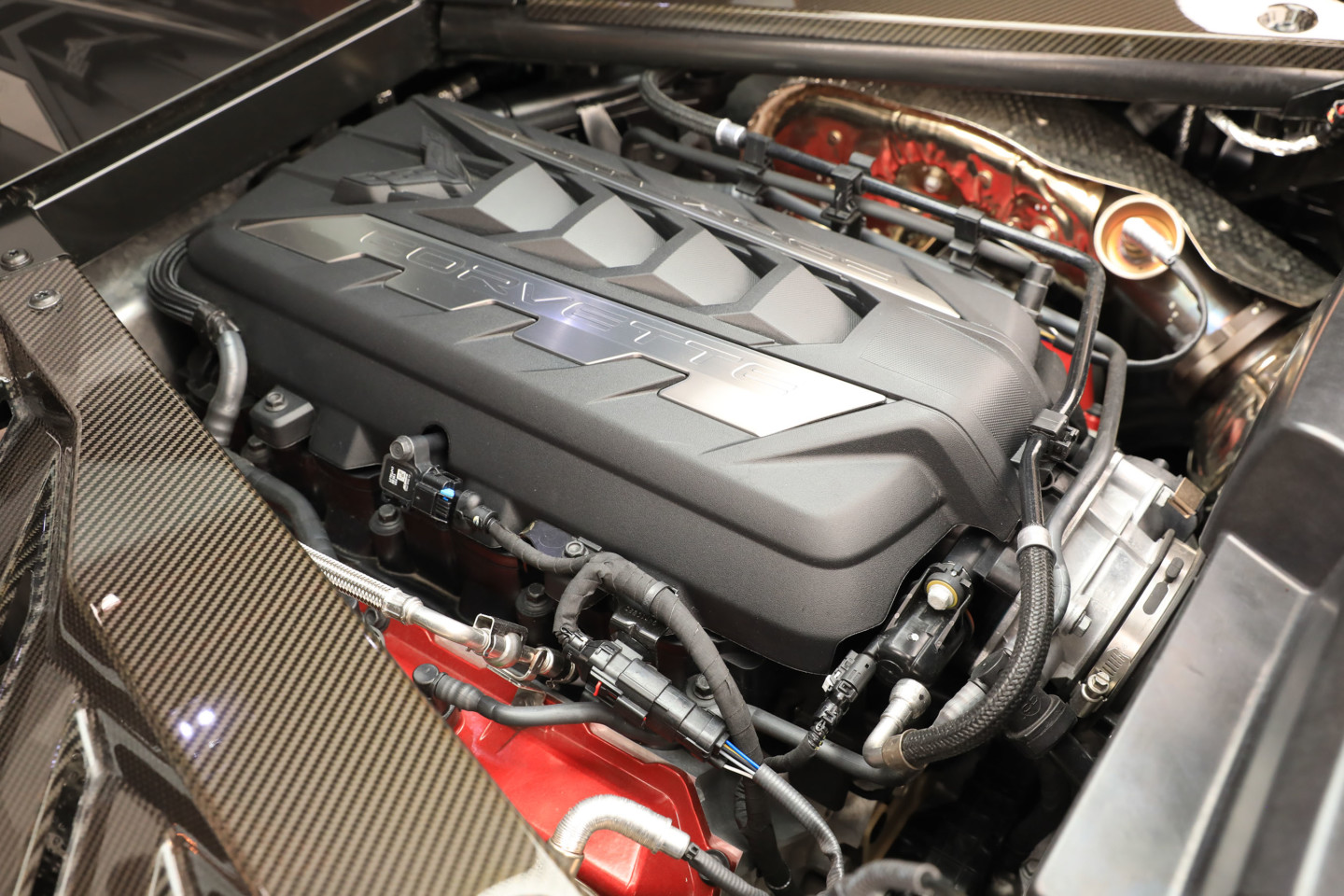
The additional vertical space afforded by putting the engine behind the occupants allowed GM engineers to make significant changes to the intake manifold design, which now boasts equal length runners and much more plenum volume.
And that allowed the team to focus on other characteristics to elevate the naturally-aspirated LT’s performance.
“The new vehicle architecture took away some of the constraints we had on LT1, and that’s really evident with the intake manifold,” Kociba says. “On the LT1, we had to consider the driver’s line of sight – you have to look over the engine, but you’re also sitting down low in the car. There was a point where we couldn’t bring the engine any lower, and we didn’t want to raise the driver in the car because that would affect the center of gravity, so we had to make the intake manifold very short. As a result, it was a bit of compromise in terms of overall capability.”
But, with the engine now behind the driver, that was no longer an issue. So GM engineers decided to make some changes.
“By basically growing the intake manifold, the plenum increased in volume from 11.1-liters all the way up to 14.1,” he says. “And for the first time with the LT series, we were able to make all the runners equal length. On the LT1, it was a mix of 185mm and 225mm, so before we couldn’t optimize all the cylinders. Now we can, with a common length of 210mm. And that allowed us to increase the top end power specifically. Once you get over about 4,500 rpm, the LT2 just pulls away.”
But he’s also quick to note that comprehensive improvements in engine performance are never about just one specific change.
On the LT1 it was a mix of 185mm and 225mm, so before we couldn’t really optimize all the cylinders. Now we can with a common length of 210mm. And that allowed us to really increase the top end power specifically. Once you get over about 4,500 RPM, the LT2 just pulls away.
“There’s a lot of system interactions. So along with the redesigned intake manifold, the exhaust manifolds are redesigned, as well – they’re routed upward, similar to a marine application, and the restrictions are much lower with the shorter path required here. And with these improvements, we changed the camshaft lift profile to take advantage of the additional flow capability. Both the intake and exhaust are 14mm of lift now, and we also added about 18-degrees of duration, so there’s significantly more cam there. And with new fuel and ignition controls, along with the intake’s equal-length runners, we were able to do that without negatively affecting the idle stability. It’s actually improved over LT1.”
Behind The Wheel
What’s perhaps most immediately striking about the C8 is that this level of attention is evident throughout the car. The cabins of Corvettes have long been an item of contention. While there may be some aesthetic controversy due to the squared-off steering wheel and the long ribbon of controls that create a barrier between the driver and passenger, few would argue that it doesn’t look and feel better put together – and more logically laid out – than any Corvette before it.
Despite a few polarizing stylistic choices, the cabin is another area where Corvette designers have made significant strides with the C8. It looks and feels very high quality (seen here in 3LT guise), and the driver-centric orientation of the controls and infotainment display are befitting of a modern sports car. Our tester was equipped with the optional Competition Sport seats, which allow for far more adjustability than the fixed carbon buckets that Porsche offers while also keeping occupants securely planted during high G lateral maneuvers. The aggressive thigh bolsters may be a bit too much for some drivers, though: Two other seat designs are also available, both of which tilt the scales more toward grand touring comfort.
That theme continues once you bring that LT2 to life. The transmission controls may initially feel alien to some, but the combination of levelers and buttons for the various gearbox functions quickly become intuitive. Developed by Tremec, the new transmission is flat-out world-class, delivering immediate, nearly seamless shifts in Sport and Track modes while also providing enough refinement to remain behind the scenes in Tour mode.
And as you’d expect, the driving experience is a significant departure from Corvettes of yore. More of the car is behind you now rather than in front of you, as is more of its weight. And as anyone with an older Porsche 911 and a heavy right foot will tell you, that can be a recipe for a vehicle that likes to swap ends at the limit. There’s a sense that Corvette chassis engineers were keenly aware of that, though, and tuned the suspension more heavily toward stability rather than rowdiness. Don’t expect to be dishing out impromptu rooster tails with this one: unless you force the hand of physics, it will understeer at the limits of grip.
In terms of both pedal feel and stopping power, the C8 continues the modern Corvette tradition of delivering outstanding braking performance - particularly when outfitted with the upgraded hardware seen here, which comes as part of the Z51 package.
While it might not be as hair-raising as its front-engined forbearers, it’s far more composed. Magnetic Ride Control is a $1900 option independent of the Z51 package, and it’s well worth the additional cash. It provided admirable ride compliance in Tour mode while traversing the less-than-perfect streets of central Los Angeles and excellent body control in Sport and Track modes out on the twisting tarmac that’s draped along the Angeles National Forest.
But with such sweeping changes, a few gripes are inevitable. As good as the dual-clutch transmission is, the loss of the manual gearbox option is a tough pill to swallow for those who appreciate the involvement they provide. Rumors of a clutch-by-wire system have been circulating around the internet for years, but at this point, we wouldn’t hold our breath.
In order to maintain the Corvette's reputation as a sports car, you can use every day (and to be able to stow two golf bags - a long-time Corvette design requirement), the C8 has two separate "trunks" that offer a combined total of 12.6 cubic-feet of cargo volume capacity. While the larger rear trunk does provide more usability than most mid-engined sports cars, it likely forced designers to compromise the car's exterior proportions.
Outward visibility leaves a lot to be desired here, as well. We’d strongly recommend C8 buyers spring for the optional rear camera mirror for that reason, as it shows you what’s behind the car instead of just a dark silhouette of the engine bay. And while aesthetics are largely subjective, the C8’s proportions seem just a little off – it’s a few inches too long between the end of the air intake and rear fender.
But on the whole, the C8 is a significant step forward for the Corvette. It offers tangible improvements on nearly every front while democratizing the mid-engine layout and giving Lamborghini Huracans something to sweat about at the stoplight.
And let’s not forget: This is just the start – it only gets better from here.





